
The Quest for the Best
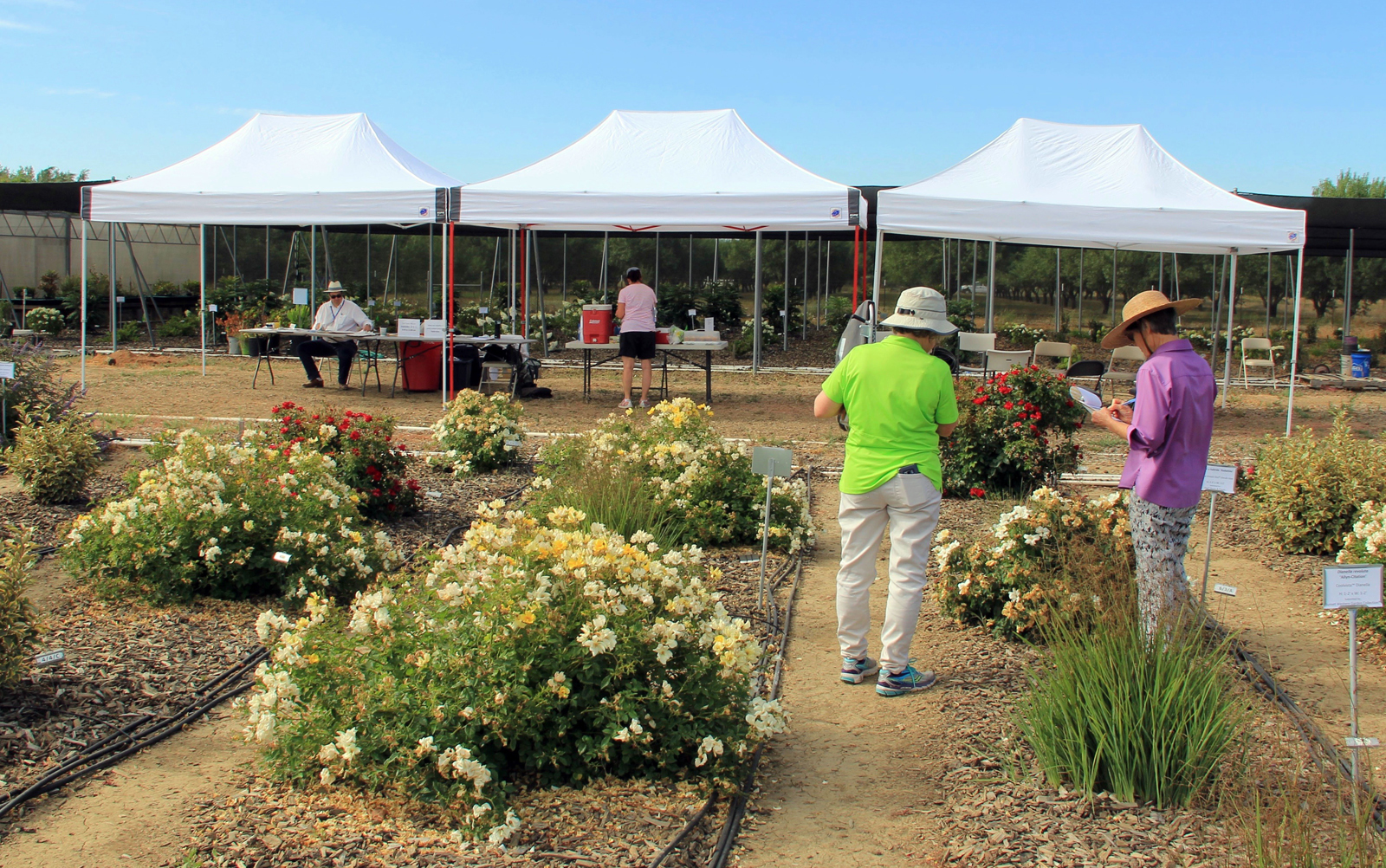
Contributor
- Topics: Plants You Need, Sustainable Gardening

Did you ever wonder how that latest plant variety made its way to your local nursery? Few people outside of the plant breeding and marketing industry realize that the “new” plant you just saw at the garden center last weekend actually began its journey from six to 20 years earlier1. One of the last steps in that journey is the plant trial.
Plant trials take place all over the country at universities and public gardens and are usually the last step before a company decides to launch a new cultivar onto the market. Although they will have evaluated a promising new cultivar in a company field, the information received from a third-party trial has the advantage of being unbiased. Those plants that prove themselves novel, attractive, and hardy are then branded and put into the latest catalog.
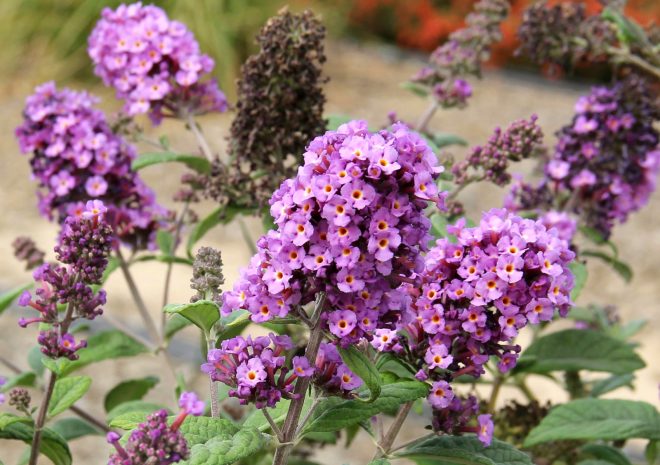
Focus on Sustainability
The vast majority of university and botanical garden or arboretum trials are designed to provide ideal growing conditions— ample water and fertilizer—to maximize the potential of the plants. At the University of California, Davis we go about plant trials in a completely different way. Our goal is to reveal the best perennial plants for sustainable landscaping in the increasingly hot and dry West.
What we promote with the UC Landscape Plant Irrigation Trials, or UCLPIT, is gardening with plants that are suited to their environment without the need for fertilizers, pesticides, or excessive amounts of water. Plants that make it through our trials with a high score can be counted on to be beautiful, low maintenance, and low water users, our Blue Ribbon™ winners, or moderate water users, which we designate Happy Mediums™.

Plants on trial
The unique thing about this trial is that plants are given several different irrigation treatments (high, moderate, or low) and evaluated for performance on each.2 While other trials typically evaluate from three to five individuals of a new cultivar all under the same conditions, we evaluate twenty-four, with eight plants on each weather-based irrigation treatment.
Plants are placed in randomized complete blocks in the ground, established on regular water in the first year, and evaluated on the different irrigation levels in the second year. Monthly measurements and quality ratings give us a good picture of how the plants perform and whether there are differences caused by the amount of water they receive. This robust scientific method over two years means we can perform statistical analysis and determine with a good degree of certainty the actual water needs of a particular cultivar.
Looking at them for two years affords the opportunity to see how they handle the mild frost and strong breezes we receive in Davis. We can also assess what kind of maintenance they require to keep their good looks. We do provide winter pruning too many of our shrubs and most of the grasses, but we make a point not to be too “precious” about it; we are trying to think like a commercial landscaper and imitate what they would probably do. With over five hundred plants in the ground, anything requiring more than annual trimming is just too much work! For instance, with groundcover roses, we take power hedge trimmers to them and just whack them back to a consistently small mound, without paying attention to outward-facing buds.
Low water use vs. drought tolerant
Drought tolerance really just means that a plant will survive without water for some period of time. However, there are plenty of these survivors that look hideous without regular water and are not desirable to the average gardener. Few people want a garden that appears to be barely hanging on to life.
To be good for sustainable landscaping, a plant must not just survive, but thrive and still be attractive on low or moderate water. So, while we are evaluating plants for water use, we are also looking at a variety of aesthetic and health parameters:
- Foliage quality: does it wilt or curl up in the midday sun? Is it healthy and uniform?
- Pest and disease damage: is it more or less susceptible based on water availability?
- Flowering period and abundance: is the bloom affected by water; is it a flash-in-the-pan or lackluster bloomer; or does it re-flower or flower over a long period of time?
- Vigor: does it languish or continue to grow?
- Visitation by pollinators and beneficial insects: is it providing added ecosystem benefits?
- Most importantly, the overall landscape appearance—the WOW factor: do I see this from across the field and think, “What is that plant?” It does a plant no good to be classified as a low-water user if no one wants to buy it.
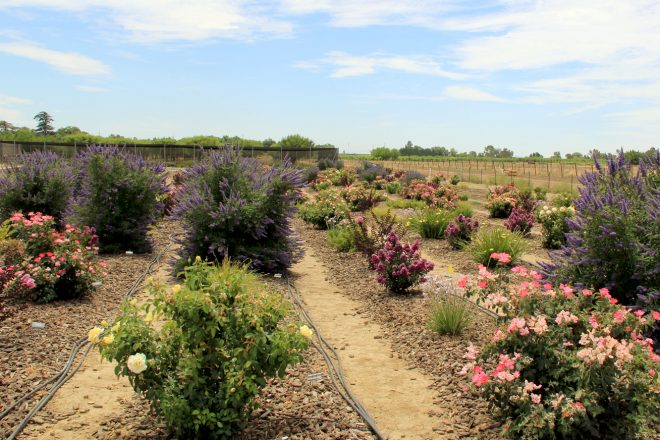
Some surprises
One of the best things about plant trials is that they have the potential to shatter your preconceived ideas about plants. One of the most fascinating things to me has been just how many of the plants we have evaluated performed equally well on all irrigation treatments. This suggests that most people over- water or water too frequently. Our highest irrigation treatment is watered once a week during the middle of July and less often in the shade.
From a scientific standpoint, when plant growth is virtually identical on all irrigation treatments, it means that many genera have evolved the ability to grow only so much during a particular growing season, regardless of the availability of water. Additional water may actually be a disadvantage if not used. If the soil is heavy and water cannot drain below the root zone, it may set up an unhealthy root environment. The water is then not only wasted but detrimental.
My realization of the power of research to disprove our assumptions came in the very first trial where we evaluated San Diego sedge, Carex spissa. At that time, the current edition of Sunset Western Garden Book stated that it required “ample moisture”. Given that it was a riparian/bog species, that was a fair assumption. However, we showed that with one year of regular water for establishment, it was actually able to perform quite well on low water; plants that were irrigated only twice during the summer looked just as robust and healthy as those that received the high-water treatment. When you consider the fluctuating nature of California’s water supply, the evolution of the ability to handle both inundation and drought seems quite advantageous, making Carex spissa an excellent choice for vegetated swales.
One of the critical things to bear in mind with new introductions is that plant breeding brings new genetics into known plant genera. While they are adding a flower color or leaf shape or plant size, there may be something hitchhiking along in the genome that alters previous water use habits for better or worse. By evaluating new plants under different irrigation regimes, we have revealed both sides of this equation. For example, we have seen both rose and butterfly bush cultivars that performed best on low water, while others required moderate or high for best performance. Clearly, we cannot assume that a new cultivar will have the same adaptations as previously-known varieties.
Open House
One of the ways we assess the appeal of these potential introductions to the market is by holding Open House ratings events three times a year: spring, summer, and fall. We invite landscape and nursery professionals and academics, garden writers, public agency personnel, and UC Master Gardeners to view the second-year plants undergoing irrigation treatments and rate a sample of them on a limited number of characteristics. We also invite feedback on favorite plants, plants they would use, and plants they dislike. We share this information with our cooperators who have entered the plants into the trials so they can make decisions about whether or not to advance plants to market, at least in our region.

Looking ahead
For the entire life of UCLPIT, grant funding has played a major role in allowing us to provide this program to the industry and the gardening public. Our most recent grant from the U.S. Dept. of Agriculture and the California Dept. of Food and Agriculture is allowing us to partner with academic colleagues at universities in Washington, Oregon, Utah, and Arizona to replicate our trials in their locations. They will work with industry partners in their regions to identify and evaluate plants appropriate to their sites.
Three years ago, we took the leap and replicated our trials for both sun and shade in Southern California at the UC South Coast Research and Extension Center (REC) in Irvine under the direction of Dr. Darren Haver. This allows us to evaluate plants in this very different climate zone and soil type (sandy loam).
Additionally, the REC uses reclaimed water. Since many parts of Southern California are now using reclaimed water for landscape use, it will be critical to know if potential introductions can tolerate it.
We know that the trend toward sustainable landscaping has spread across the country and believe that Step One is knowing which plants are regionally appropriate. We are excited about bringing the scientific rigor of our plant trials process to other regions and hope that wherever water availability is a factor, this model of plant evaluation becomes the norm. With so many beautiful plants in development and now available for the sustainable gardening model, we are thrilled to be part of the process that brings an ever-wider variety of new and exciting climate-appropriate plants to a garden center near you!
If you fit into the category of one of our Open House participants and would like to attend one of our events, please contact us for more information.
Visit the UC Landscape Plant Irrigation Trials website and Facebook page.
1 The UK Plant Breeding Sector and Innovation https://assets.publishing.service.gov.uk/government/uploads/system/uploads/attachment_data/file/552498/Plan t-breeders.pdf
2 For a more detailed description of our irrigation protocols, please visit our website: https://ucanr.edu/uclpit
Share:
Social Media
Garden Futurist Podcast
Most Popular
Videos
Topics
Related Posts
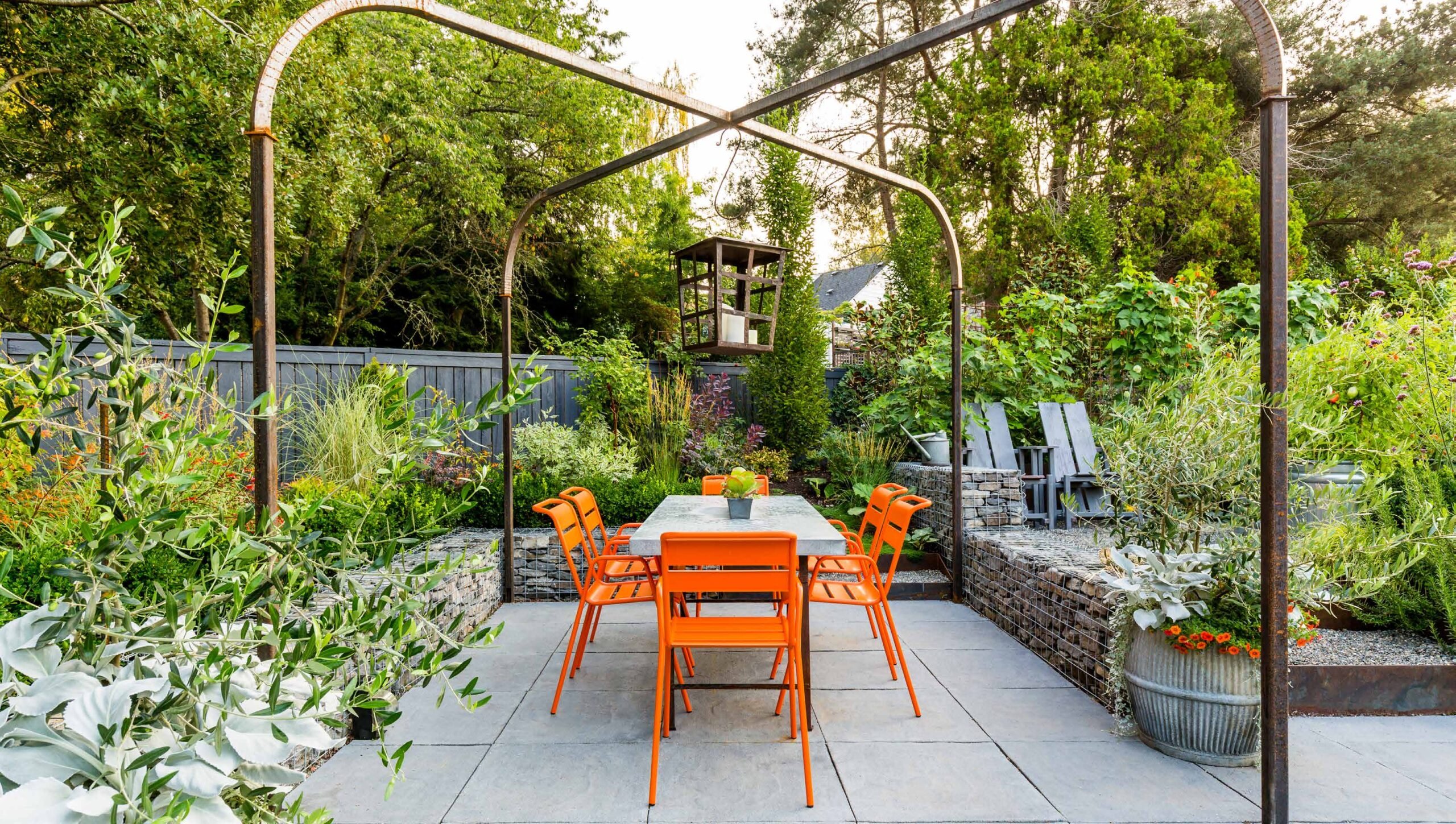
Design Futurist Award Announced: Committee Shares Vision
March 8, 2023 At Pacific Horticulture, we believe that beauty can be defined not only by gorgeous plants and design, but also by how gardens

Ground Up Science for Greener Cities with Garden Futurist Dr. Alessandro Ossola
Spring 2023 Listen to the Podcast here. Alessandro Ossola is a scientist who gets very excited about the challenge of climate change allowing for an

Readying Urban Forests for Climate Realities with Garden Futurist Dr. Greg McPherson
Winter 2023 Listen to the Podcast here. “Going from the mow and blow to a more horticulturally knowledgeable approach to maintaining the landscape. And that
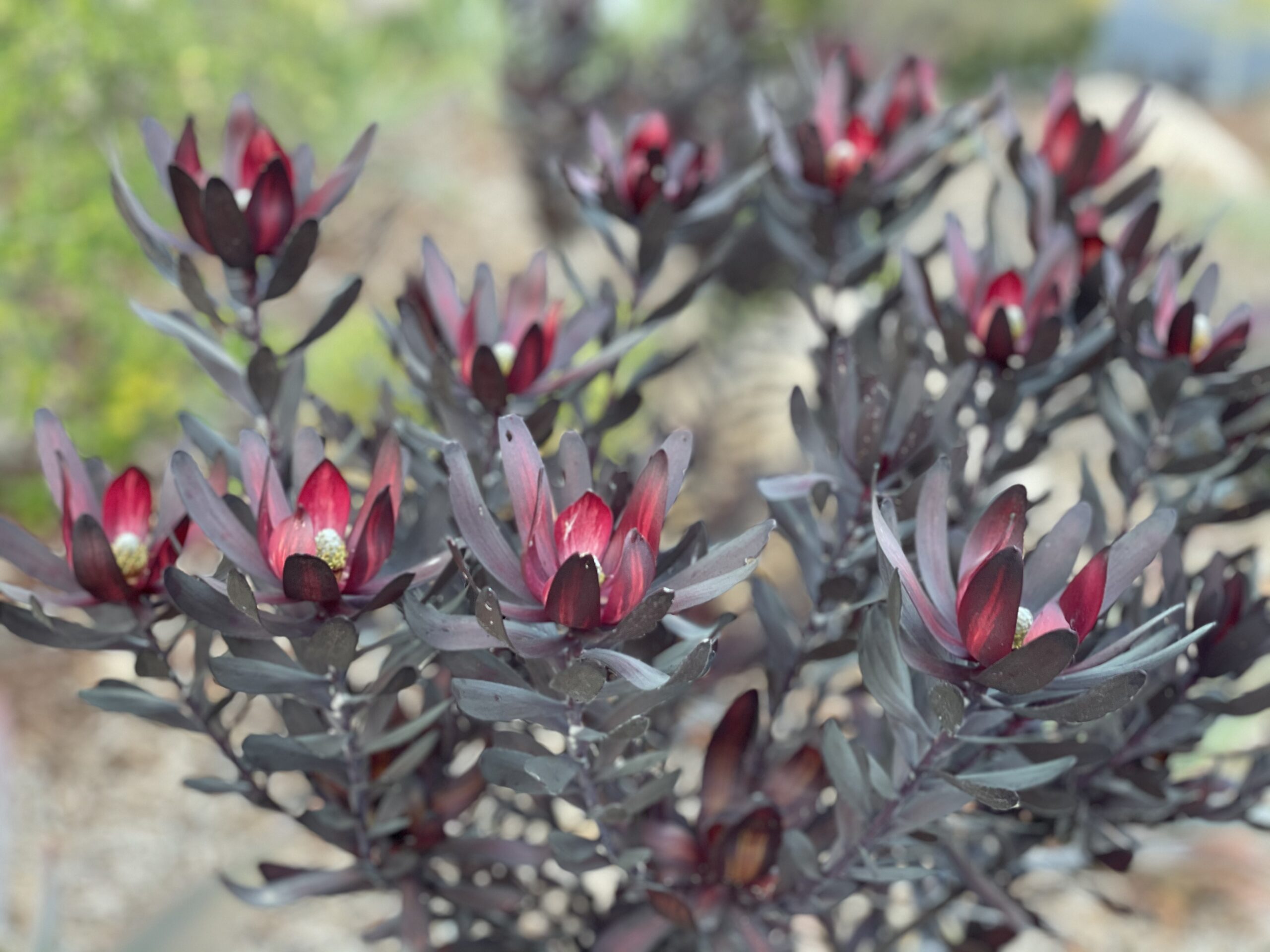
Expand Your Palette: Waterwise Plants for your Landscape
There’s nothing more thrilling to plant lovers than discovering new plants to test in the garden. Here in the southernmost corner of California, we have








Responses